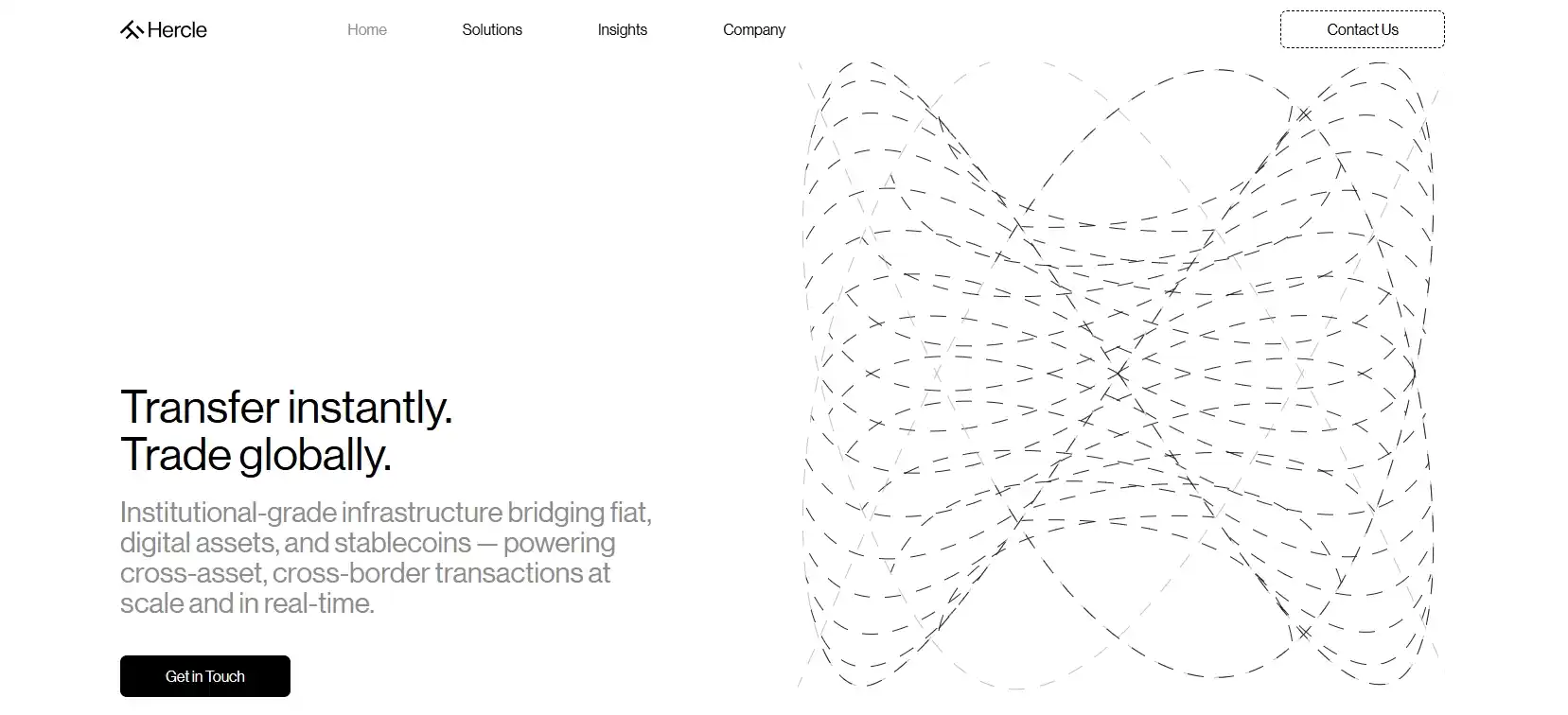In the rapidly evolving Web3 ecosystem, reliable and efficient infrastructure is becoming a critically important element. The Hercle project positions itself as a decentralized provider of fundamental services designed for blockchain application developers.
The platform offers a set of tools that enable the creation, scaling, and maintenance of next-generation decentralized projects. The emphasis is on accessibility, performance, and security, making blockchain technology more practical for widespread adoption.
Contents:
- Hercle's Mission and Vision
- Key Project Products and Services
- Platform's Technical Advantages
- Hercle Architecture and Security
- Role in Web3 Ecosystem Development
- Conclusion
Hercle's Mission and Vision
The fundamental goal of the Hercle project is to democratize access to advanced blockchain infrastructure, eliminating technical barriers to mass Web3 adoption. The platform aims to provide developers worldwide with reliable, high-performance, and accessible tools that enable the creation of competitive decentralized applications without the need to invest in complex and expensive underlying infrastructure.
The project's long-term perspective involves the formation of a global decentralized network capable of ensuring the uninterrupted operation of millions of next-generation dApps. This approach not only strengthens the very idea of distributed systems but also opens new horizons for digital innovation, creating a technological foundation for a more open, secure, and sovereign internet, free from the control of single centralized entities.
Key Project Products and Services
Hercle offers a comprehensive solution for developers building applications in the Web3 ecosystem. The platform specializes in providing reliable and high-performance infrastructure that abstracts the complexities of interacting with blockchains. The core value lies in a set of critical tools that allow focusing on product business logic rather than supporting basic systems. Key offerings include:
- Decentralized RPC (Remote Procedure Call) Service: Acts as a high-speed and reliable link between client applications and distributed networks, ensuring the execution of queries and transactions.
- Access to Full Nodes: Provides the ability to read data from the blockchain, check network status, and send transactions without the need for independent deployment and maintenance of resource-intensive nodes.
- Powerful API: Simplifies integration with multiple popular blockchains, offering structured data for creating complex products such as analytics dashboards, wallets, and DeFi platforms.
This carefully crafted set of services covers all basic needs for launching and scaling a decentralized application. Thanks to this comprehensive approach, developers get a single entry point for accessing multi-chain infrastructure, significantly accelerating the development cycle and product time-to-market.
Platform's Technical Advantages
The main advantage of Hercle is its high performance, achieved through distributed architecture and optimized network requests. The system guarantees minimal latency in data processing, which is critical for real-time applications. The infrastructure's scalability allows it to flexibly adapt to growing loads.
The platform is designed to ensure maximum fault tolerance, which minimizes downtime and increases overall service reliability. Users gain a competitive advantage through stable and predictable access to blockchain data, which is particularly important for financial applications and high-load services.
Hercle Architecture and Security
Hercle is based on a fundamentally different approach to infrastructure construction compared to traditional centralized solutions. The platform is architecturally implemented as a network of independent nodes that collectively ensure the uninterrupted operation of all services. This design systematically eliminates single points of failure, dramatically increasing resilience to failures and external impacts. For a visual comparison of key characteristics, consider the following table:
| Criterion | Centralized Provider | Hercle |
|---|---|---|
| Availability Level | Depends on one or several data centers | Distributed across a global network of independent nodes |
| Attack Resistance | Vulnerable to targeted attacks on critical servers | High resilience thanks to distributed architecture |
| Transparency and Control | Limited transparency, control by a single organization | Full operational verifiability, decentralized management |
This structural difference not only technically implements fault tolerance but also strengthens the fundamental principles of Web3. Hercle's decentralized architecture makes the ecosystem as a whole more reliable, transparent, and aligned with the original ideals of distributed technologies, where security is ensured not by trust in a single operator but by the very design of the network.
Role in Web3 Ecosystem Development
Hercle fulfills a fundamental mission, serving as a key building block for the entire Web3 industry. By providing reliable and decentralized access to blockchain data, the project significantly accelerates the process of developing and bringing new solutions to market. Its multifaceted impact on the ecosystem can be structured as follows:
- Lowering the Technological Barrier: Developers can focus on the business logic and user experience of their dApps without spending resources on deploying and maintaining complex underlying infrastructure.
- Strengthening Decentralization: The network-based construction of the platform counteracts centralization, enhancing one of the key ideologies of Web3 and making the ecosystem more resilient and democratic.
- Stimulating Innovation: Accessible and powerful tools open up broad opportunities for experimentation, enabling small teams and individual enthusiasts to create unique and competitive products.
Thus, the project's contribution goes beyond simply providing services. Hercle actively shapes a healthier and more dynamic environment, attracting new talent and capital to the industry, which in the long term contributes to the sustainable growth of the entire decentralized ecosystem.
Conclusion
The Hercle project represents a fundamental building block for the development of the Web3 ecosystem, offering reliable decentralized infrastructure. The platform successfully solves key developer problems by providing high-performance access to blockchain networks through its RPC services, nodes, and API.
Integration with various blockchains allows the creation of complex dApps without the need to deploy one's own infrastructure. The project's architecture, based on a distributed network of nodes, guarantees fault tolerance and aligns with the principles of decentralization. Thanks to this approach, Hercle makes a significant contribution to the formation of a more accessible and sustainable Web3 ecosystem, accelerating the mass adoption of blockchain technologies.





